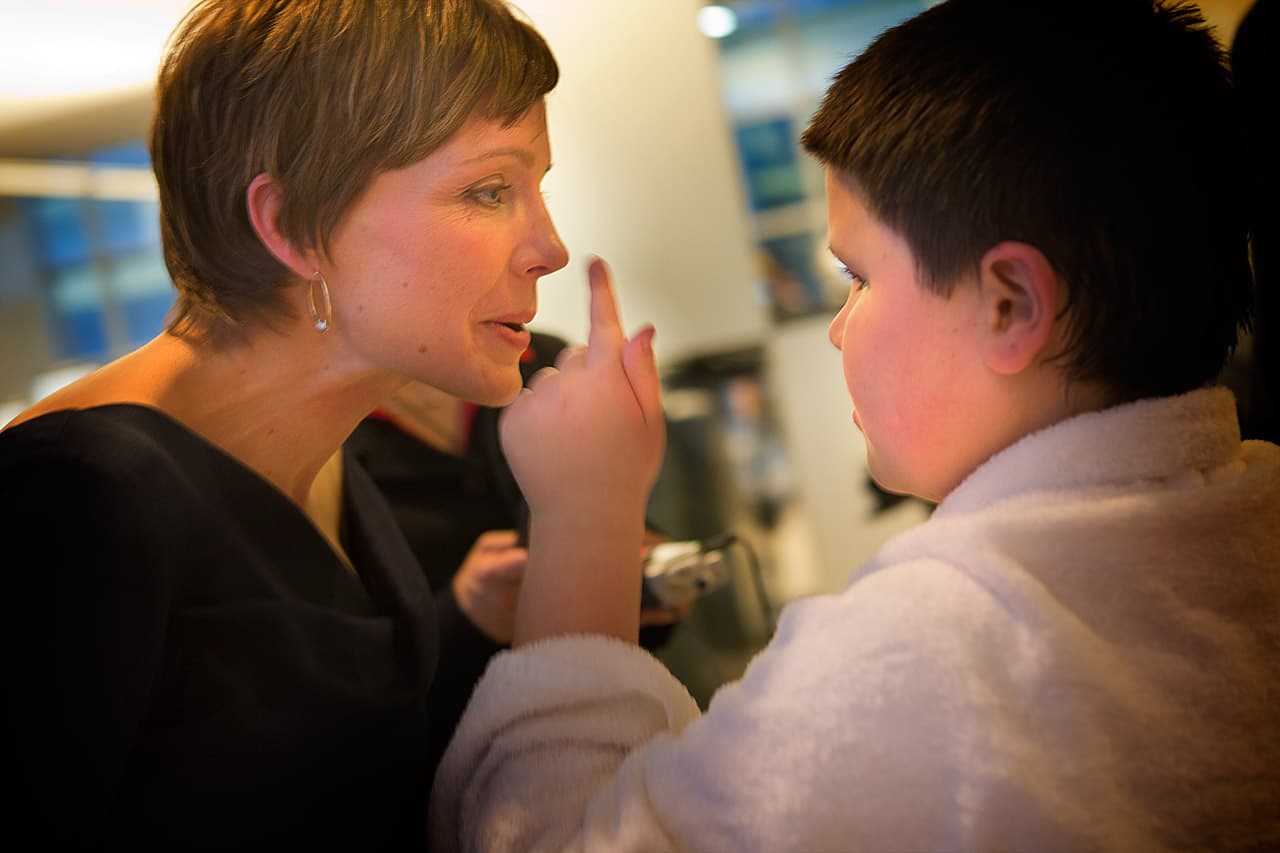Advertisement
Autism Study Blames Chemical Switch Not 'Flipped' At Birth
Are the seeds of autism laid at birth?
A new study published today in Science suggests that autism may result when a chemical switch in the brain doesn’t get flipped during delivery.
The brain chemical GABA excites brain activity in the fetus and then tamps down electrical signals in the more mature brain, with the change happening at or around birth. The new study by a group of French researchers suggests that the failure of GABA to make that switch can make the brain more vulnerable to autism.
“The bottom line is at least in rodents – and there is some reason to believe this might apply in humans – there are a couple of events which must take place very early on,” said lead researcher Yehezkel Ben-Ari, of the French Institut National de la Santé et de la Recherche Médicale, in Marseille. “If they don’t take place, autism evolves, and if you reduce somehow these events... the mice are much less autistic – implying that an early treatment might be very useful.”

Ben-Ari and his co-authors also think they have a solution: A drug they have patented that they believe can restore GABA’s functioning.
Their study was in rats and mice with a rodent-form of autism. The mice had the same genetic fluke that causes the disease Fragile X in people; the rats were exposed to valproic acid, an epilepsy drug known to increase the risk of autism when given to pregnant mothers.
Both the rats and mice showed fewer autistic behaviors when their pregnant mothers were given the drug bumetanide, a generic diuretic used to treat fluid retention that can come with high blood pressure and edema.
“Brain activity is like a scale between excitation and inhibition –there has to be a balance,” said Andrew Zimmerman, a pediatric neurologist at the University of Massachusetts Medical School in Worcester, who was not involved in the new study but wrote a commentary about it in Science. “We’ve known this switch takes place but we never were able to sense before the mechanism by which this happens.”
It’s too soon to tell whether bumetanide will be able to restore that balance to the brains of children with autism, but the researchers have started testing it in French and Spanish children with autism, ages 2-18, with results expected by the end of the year.
Ben-Ari said he doesn’t expect the drug to be a cure-all; behavioral therapy and other pharmaceuticals will likely still be needed to treat autism symptoms, because autism is so complex.
And he doesn’t want to give the drug before birth, as he did with the rodents, because it’s impossible to identify which newborns will go on to develop autism, and unethical to study the drug on healthy children.
But he does think that the variant of bumetanide he’s developed promises to help people across the autism spectrum, just as it helped rodents whose autism was caused by different triggers.
It’s that broad reach that most impressed doctors who work with kids on the autism spectrum.
“My excitement is this could be a common pathway,” said Dr. Gary Goldstein, president & CEO of the Kennedy Krieger Institute, a clinical and research center based in Baltimore. “We don’t have any medications for autism – nothing that treats the core symptoms.”
No single study can be considered definitive science, though, and this study, like all others, had its flaws. The French researchers looked only at a few autistic behaviors; it’s possible the mice and rats still retained some essential characteristics of autism. And of course, a mouse with induced autism is very different from a person with the condition, who may have difficulty reading social cues, communicating and avoiding repetitive behaviors.
“This is really interesting and important from a basic neuroscience perspective,” said neuroscientist Jeremy Veenstra-VanderWeele, an associate professor and autism expert at Vanderbilt University in Nashville, Tenn. “It remains to be seen whether this applies to a large group of kids with autism or whether this is directly impacting something that matters for the cause of autism.”
The research also needs to be repeated by scientists without a financial stake in the drug.
Ben-Ari and his colleagues started a company, Neurochlore, based in Marseille, to study and develop their version of the drug.
Several scientists and doctors expressed concern that some families with autism would start trying bumetanide on their own, before it has been fully tested.
“I certainly would have a caution against prescribing this,” Goldstein said.
In addition to not knowing whether the drug will be effective, researchers are still trying to figure out at what age it should be given and in what doses. Although bumetanide has been used in adults for decades, it’s not clear what side effects it might have in small children who take it for this purpose.
Autism cannot be diagnosed reliably before age 2 and the average age of diagnosis is 4. Although Ben-Ari, a neurobiologist, and expert in brain development, thinks bumetanide will probably work better the earlier it is given, that has yet to be shown, and he is not testing children younger than 2.
The significance of this paper, Ben-Ari, said is that it shows what comes before the autism is manifest. He compared it to having a car accident because you’ve blown a tire. Once you crash, it’s the engine that needs fixing, even if the tire may have caused the initial problem. He thinks he’s found the equivalent of that tire in autism: the lack of a flipped switch at birth.
Karen Weintraub, a Cambridge-based Health/Science journalist, is a frequent contributor to CommonHealth. Follow her on Twitter @kweintraub.